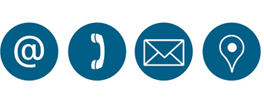Having bleeding kits in your business offers numerous benefits that enhance safety and preparedness. Here are some key advantages:
1. Immediate First Aid Response
Quick Access: Bleeding kits provide immediate supplies to address severe bleeding, which can be critical in emergencies.
2. Injury Mitigation
Reduced Severity: Prompt application of the right materials can help control bleeding, potentially saving lives and minimizing the severity of injuries.
3. Compliance with Regulations
Health and Safety Standards: Many workplaces are required to have first aid supplies. Bleeding kits help ensure compliance with occupational health regulations.
4. Employee Confidence and Morale
Safety Assurance: Knowing that effective first aid supplies are readily available can boost employee morale and confidence in workplace safety.
5. Training Opportunities
Skill Development: Having a bleeding kit can encourage training in first aid and emergency response, fostering a culture of safety among employees.
6. Risk Management
Liability Reduction: Preparedness can help mitigate risks and reduce potential liability in the event of an accident or injury.
7. Enhanced Reputation
Customer Trust: Businesses that prioritize safety are often viewed more favorably by clients and customers, improving overall reputation.
8. Emergency Preparedness
Comprehensive Safety Plan: Bleeding kits are an essential component of an overall emergency response plan, ensuring readiness for various incidents.
9. Community Responsibility
Support for Guests: Providing first aid resources shows responsibility not only for employees but also for guests and visitors.
10. Regular Maintenance
Ongoing Safety Culture: The need to regularly check and maintain the kits reinforces a culture of safety and preparedness within the organization.

Having a bleeding kit in your business offers several important benefits:
Immediate Response: Quick access to a bleeding kit allows for immediate first aid in case of an injury, potentially saving lives or preventing further harm.
Compliance and Safety: Many industries are required to have first aid supplies on hand. Having a bleeding kit helps ensure compliance with occupational health and safety regulations.
Employee Confidence: Knowing that there are supplies available for emergencies can boost employee morale and confidence in the workplace.
Reduced Severity of Injuries: Prompt treatment can help control bleeding and reduce the severity of injuries, leading to better outcomes and quicker recovery.
Training Opportunities: Having a bleeding kit can encourage first aid training among employees, creating a more safety-conscious workplace.
Risk Mitigation: It demonstrates a commitment to safety, potentially reducing the risk of liability in case of an accident.
Preparedness for Emergencies: It prepares the business for a variety of emergencies, from minor injuries to more serious incidents, fostering a culture of readiness.
Enhanced Reputation: Businesses that prioritize safety are often viewed more favorably by clients, customers, and potential employees.
Investing in a bleeding kit is a proactive step towards ensuring workplace safety and readiness for emergencies. Would you like tips on how to implement this in your business?

Installing an AED (Automated External Defibrillator) in a small business can significantly enhance workplace safety. Here are some key considerations and benefits for small businesses:
Benefits of Having an AED
Life-Saving Potential: AEDs can dramatically increase survival rates for cardiac arrest victims. Quick access is crucial for effective intervention.
Employee Safety: Providing an AED demonstrates a commitment to employee health and safety, fostering a supportive work environment.
Guest and Customer Care: If your business serves the public, having an AED can enhance customer safety and confidence.
Regulatory Compliance: Depending on your location, there may be legal requirements for AEDs in certain types of businesses, particularly those with larger foot traffic.
Emergency Preparedness: An AED is a key component of a comprehensive emergency response plan, ensuring you’re ready for medical emergencies.
Training Opportunities: Installing an AED encourages staff training in CPR and AED use, promoting a culture of safety.
Improved Reputation: Businesses that prioritize safety can enhance their reputation, attracting more customers and employees who value a safe environment.
Key Considerations for Implementation
Choosing the Right AED:
Look for user-friendly models that provide clear audio and visual instructions.
Consider features like adult and pediatric pads, long battery life, and durability.
Location:
Place the AED in a visible and accessible location, ideally near high-traffic areas or where large gatherings occur.
Training:
Provide training for employees on how to use the AED and perform CPR. Consider regular refresher courses.
Maintenance:
Implement a routine for checking the AED to ensure it’s operational, including battery checks and pad expiration dates.
Emergency Protocols:
Develop clear emergency response protocols and ensure all staff are familiar with them, including how to call emergency services.
Signage:
Use clear signage to indicate the location of the AED and provide simple usage instructions.
Budgeting:
Factor in the cost of the AED, ongoing maintenance, and training when budgeting for the installation.
Additional Tips
Engage with Local EMS: Inform your local emergency medical services about your AED installation so they can assist in training and know its location.
Encourage a Safety Culture: Promote awareness about the importance of having an AED and emergency response readiness among employees.
By installing an AED, small businesses can enhance their safety measures, potentially saving lives in critical situations. If you need further assistance or specific product recommendations, feel free to ask!






